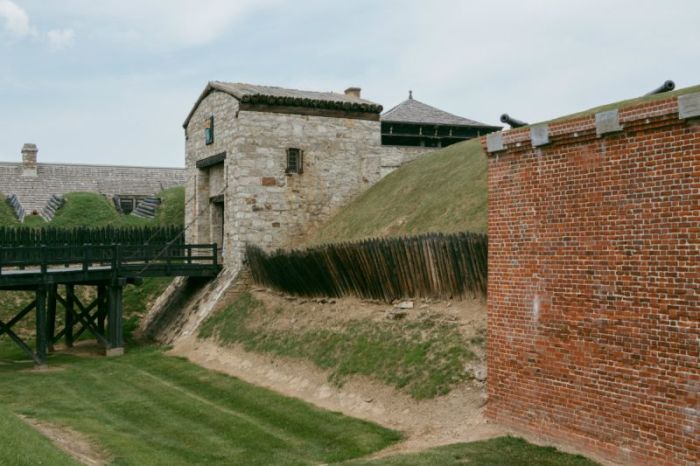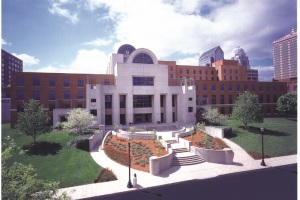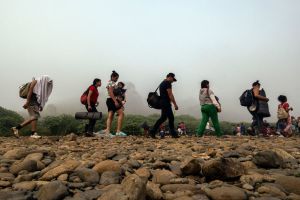History, Wine and the Natural Beauty of Waterfalls Await in Niagara Falls USA

Niagara Falls, which straddles the international border between Canada and the United States, was one of the first mass-market tourism destinations and remains popular with over 20 million yearly visitors between the two sides.
Most who come to see the waterfalls don't stay in Niagara Falls, New York. Instead, they go to Niagara Falls, Ontario, which for decades has lured tourists with more attractions, more hotels and more restaurants.
As a result, the American side can feel a bit like a ghost town even during peak tourism season.
I recently returned from a 48-hour visit and will admit that I was pleasantly surprised, not least because the thinner crowds gave me better access to Niagara Falls.
Yes, the dilapidation that comes after a city loses over half of its population since 1960 is everywhere. City Hall, desperate to stop the decline, thought a gimmick offering student loan repayment would entice millenials to Niagara Falls. Empty storefronts are everywhere. Downtown could be a case study in 1970s and 1980s city planning gone wrong. The architecture of newer buildings is inconsistent, if not hideous. Good restaurants are few and far between, unless TGI Fridays and Rainforest Cafe are your thing.
None of that is to say the Canadian side is better. Yes, it has more hotels, but Niagara Falls, Ontario, is grossly overdeveloped to the point where high-rise towers ruin what would be a pristine vista. Around the hotels sits a dumpy tourist trap.
I made Niagara Falls U.S.A. my base to discover the area's rich history, somewhat unknown wine and natural beauty.
Twenty minutes by car from downtown is Old Fort Niagara, a wonderfully preserved fort. It would be fair to call it one of the country's most historic landmarks.

Built by the French in the early 18th century on the site of two earlier forts and trading posts from the 17th century, Fort Niagara is strategically situated at the point where Lake Ontario and the Niagara River meet.
Two battles were fought here during the French and Indian War, as the North American theater of the wider Seven Years' War between France and Great Britain from 1756–1763 is called, and the War of 1812. Largely forgotten today, the wars played important roles in shaping the history of the United States and Canada. In-between, during the American Revolution, the fort was also a key British outpost until the United States finally took control of it in 1796.
Alternate history enthusiasts will enjoy speculating on how France could have remained a power in North America and the 13 colonies wouldn't have declared independence in 1776 had the battle at Fort Niagara in 1759 and the Seven Years' War itself turned out differently.
Today, Old Fort Niagara consists of fortifications and buildings that range from the early French period through the 19th century improvements made by the United States after the War of 1812. Daily programming features interpreters portraying soldiers from the fort's French, British and American periods through demonstrations of musket and artillery firings, military drills and even period fife and drum music.
Leaving the fort I drove New York State Route 18F, which runs along the Niagara River and turns into Main Street at Youngstown (population 1,910). The village's downtown includes a couple of cafés and art galleries, quaint historic houses and a handsome postbellum Episcopal church built in the style of Carpenter Gothic. Just down the byway, about halfway between the fort and Niagara Falls, is Lewiston, a slightly bigger village (population 2,701) with noticeably more shops, cafés and restaurants.
While the culinary scene in Niagara Falls is nonexistent, winemaking is flourishing across Monroe, Niagara and Orleans counties, the three counties that make up the Niagara Wine Trail.
Over 20 wineries, including Arrowhead Spring Vineyards and Freedom Run Winery, are operating, thanks to a unique microclimate created by Lake Ontario and the Niagara Escarpment. The same microclimate is also responsible for the better-known wine appellation on the Canadian side of the border.
Last but not least is what pretty much everyone comes to see: The three wondrous waterfalls making up Niagara Falls.
Opinions run deep, as one might expect, about which side of the border has the best views of the American Falls, Bridal Veil Falls and Horseshoe Falls. However, as far as I'm concerned Niagara Falls U.S.A. is the winner, thanks to the Niagara Falls State Park.
The 221 acres of parkland, which owes its existence to acclaimed 19th century landscape architect Frederick Law Olmsted, takes you to within feet of the waterfalls. You could spend hours in the country's oldest state park — it makes the perfect spot for a picnic.
If you go
I stayed downtown at the Sheraton Niagara Falls, which has super reasonable rates. However, the food was horrible and the hotel charged a ridiculous daily resort fee, despite not being a resort. Still, it's within walking distance of the Niagara Falls State Park.
Alternative accommodation options include the Niagara Crossing Hotel & Spa in Lewiston or the Vineyard Manor House on the estate of the Freedom Run Winery.
For wine tasting tours you might want to consider a five-hour excursion from Gray Line that costs $62.96 per person and runs through the end of October. Another option is the Niagara USA Wine Festival, which is held every July.
For those not driving to Niagara Falls, the closest major airport is the Buffalo Niagara International Airport.
Spires and Crosses, a travel column exclusive to The Christian Post, is published every week. Follow @dennislennox on Twitter and Instagram.





























